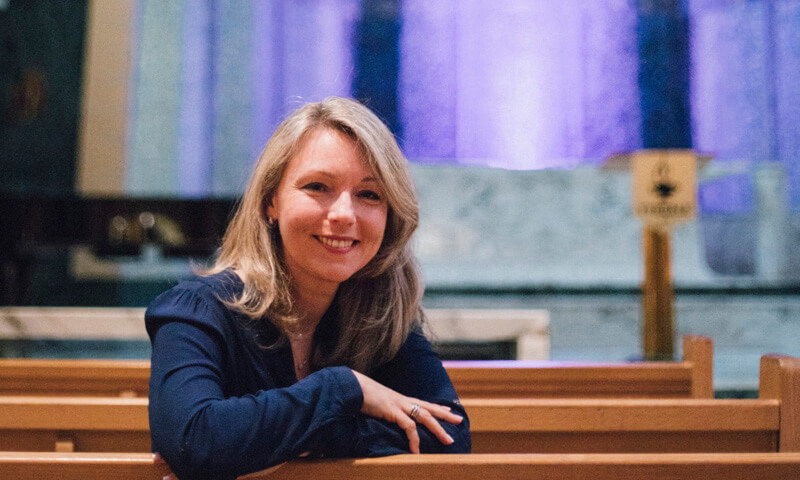Before joining the team at Tyndale’s Family Life Centre, Lisa Oppitz [MDiv 2019] was an intern with Tyndale Counselling Services while enrolled in Tyndale’s Counselling Program. She works with individuals, families and couples and hopes to gain additional certification in the areas of grief and trauma counselling, as well as in play and art therapy.
Prior to studying at Tyndale, she taught French Immersion with the Toronto District School Board. She later took time off to raise her family and volunteered with Community Bible Study International and mentored with Moms Arise. Her volunteer work motivated her to pursue theological studies, specifically in the area of Christian counselling.
Lisa was the graduating seminarian speaker at Convocation Chapel this past April. In her speech, she made references to her Tyndale journey and why it was such a defining experience for her. She expanded on the collective challenges of her fellow seminary graduates. Many struggled with balancing multiple aspects of their lives, whether financially, professionally or personally. Often there was sacrifice and the need for perseverance in their academic journeys. Talking about Henri Nouwen, she presented the sequence of the Eucharist (taken, blessed, broken, given), relating this process to the Tyndale Chapel mosaic artwork and to her own Tyndale experience. Here are some excerpts from her inspirational speech:
“Like many others, I have been deeply drawn to the majestic mosaic art work in Tyndale’s chapel. My hope is to share how the materials and processes involved in this art form can evoke images and understandings of the personal, relational, spiritual and vocational journeys in which we’ve participated during our formative and transformative time here at Tyndale.
“In researching our chapel’s mosaic, I learned that…approximately 400,000 individually cut tiles, or tesserae, are set in the work before you…Few of the tessarae have equal sides, and, in fact, many are chipped, cracked, uneven, fissured, or lacklustre at initial glance. Interesting to note is that a piece is never discarded. In fact, the most unique pieces are set aside for just the right place. However, while each tile and each small section are beautiful to behold on their own, the art of mosaic invites an appreciation of the whole.
“Light also plays a critical role in the effect of the mosaic. The reflective properties in the glass tiles, set at slight angles in the adhesive medium, invite the light to be reflected in particular ways. The quality of light falling on the tile will depend on the time of day, weather, and season. At times, artificial light angles and streaming sunbeams will illuminate particular sections, while others stay shadowed. Interestingly, the inherent reflective quality of each tile is not altered by external conditions. And so, we observe an ever-expanding, light reflecting beauty in mosaic.
“When we consider the wholeness, the entirety of the art piece, the Latin term for this style of mosaic – opus tesellatum (a life’s work in tesserae) – makes such sense. And one could argue that, by no accident of design, such an art form was chosen and created as the backdrop for the cross, Christ’s opus. Our life, our beautiful, messy, redeemed life in process – the one formed in each one of us and the one formed as a body of witnesses – is full of Christ-light-absorbing and Christ-light reflecting properties meant to point a hurting world to the cross. As we move forward in our next chapters, may we embrace the taking, the blessing, the breaking, and the giving, and may we remember this place and these people who helped teach us how to do that well.”
